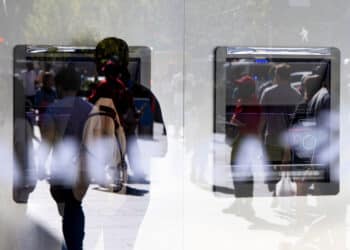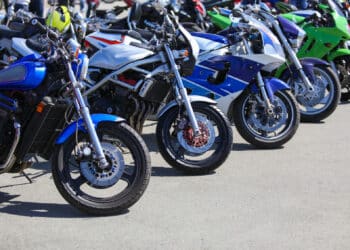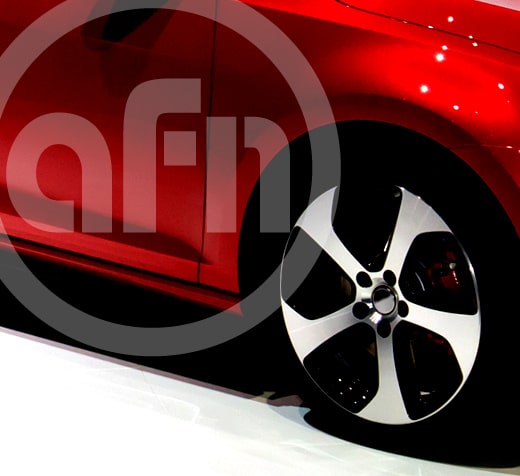Arrivederci, Lancia?
In a teleconference last Friday, Fiat CEO Sergio Marchionne announced a number of fairly significant strategic changes to Fiat’s global operations and brand strategies. Marchionne’s broad strokes are outlined essentially like this:
– Fiat as a brand will focus only on small cars, ceding the mid-size market in Europe where it has struggled for years with less competitive products like the Croma, dropped in 2011 in favor of the Fiat Freemont (a rebadged Dodge Journey), which itself is likely to be dropped.
– Jeep will grow, expanding the model line to include more crossovers and the international distribution network. Jeep’s history of export popularity – it’s still common to see 1980s and 1990s Cherokees on European streets – and extremely strong brand should serve it well internationally.
– Alfa Romeo will handle mid-size to large cars, which will all be pitched at premium markets, and premium small cars, which is not much change for the Milanese brand.
– Maserati will come a little bit downmarket and occupy the netherworld between Alfa-Romeo’s mainstream offerings and Ferrari‘s halo cars. Ferrari is no longer under the direct control of Fiat, and Maserati was aligned with Alfa-Romeo and taken out of Ferrari’s corporate control in 2005.
– Chrysler and Dodge were not discussed in detail, since this call focused primarily on European operations.
– Lancia will be discontinued.
 Although the changes to Fiat and Jeep are significant, it’s that last item that rose eyebrows in automotive circles, though perhaps it shouldn’t have been surprising. But that last item, it turns out, might not happen after all.
Although the changes to Fiat and Jeep are significant, it’s that last item that rose eyebrows in automotive circles, though perhaps it shouldn’t have been surprising. But that last item, it turns out, might not happen after all.
If you live in North America, chances are you’ve only heard the name Lancia in passing or, if you’re old enough, you might remember it from the 1970s, when Lancias were briefly sold here. Or maybe you like rally racing and AWD supercars and remember the ’70s Stratos or ’90s Delta Integrale. But in Europe, Lancia is one of the oldest and most storied brands around – long hailed as technology pioneer (unibody technology, the volume-production V6 engine, five-speed gearboxes, independent suspensions, etc.) with a strong racing and luxury pedigree.
So what happened?
For one thing, for all that storied past, Lancia has been a back-bencher on life support for a long, long time. At the root of that situation are two cars from the 1970s that Fiat hoped would take Lancia into the modern era – the compact/mid-size Beta and the larger Gamma.
Lancia has had a couple of brushes with death, the closest being when it had to be sold to Fiat in 1969 or go belly up. Back then Lancia’s cars were the highest quality cars in Italy, and could rival Mercedes on how they felt and operated, and were world leaders in terms of technological sophistication. But they were also built to a huge loss – every car cost the company more to make than they could ever get back from retail sale. Part of that was the very high standards, part of it was the lack of any kind of economy of scale, and part of it was that Lancia was still operating as it had in the 1920s, building a fistful of volume cars with their own hardware to very high standards and a bunch of bespoke models that cost a fortune but only sold a trickle of units every year.
Fiat’s takeover meant survival, but Fiat’s early mistakes when managing Lancia, and its general 1970s issues of quality and labor strife, helped kill Lancia’s appeal as a premium brand.
The Beta debuted a modern front-drive platform in 1972 that has been widely imitated – a look back at the Beta’s technical specification will reveal a blueprint for nearly every front-drive sedan of the 1980s – but the Beta’s technical excellence was overwhelmed by its quality and rust problems. In the U.K., the manufacturer had to buy back and crush some rusty cars from unhappy owners, some of them up to six years after the car’s initial sale. In the U.S., a dumping scandal and the rust/quality ills, and a poor dealer network, sent Lancia fleeing from these shores by 1982.
The luxury-oriented Gamma had even deeper problems. When developed, Fiat was marketing two of its own larger cars in the European market, the luxury-oriented, V6-powered 130 and the family-oriented, four-cylinder 132. So it was decided that the Gamma would use a large flat-four cylinder engine instead of V6 or inline six like the competition so it could slot between these entries. This handicapped the car in terms of prestige, but worse – the engine itself developed an alarming reputation for self-destruction. The power steering pump was driven by the timing belt, and if the steering was turned to full lock when the car was started from cold, the belt could jump or snap, resulting in an expensive collision of valves and cylinders.
Lancia introduced the comparatively trouble-free Delta in 1979, which was more closely related to a Fiat, the Strada/Ritmo, and most Lancia models thereafter were basically warmed over Fiats. Quality got much better over time (though it still trailed Japanese rivals until recently), but Lancia withdrew from all international markets except for continental Europe. Over time, there were some low-volume halo models, like the Ferrari-engined Thema 8.32 and the rally-oriented Delta Integrale. But mostly, Lancia became a kind of Italian Mercury to Fiat’s Ford and Alfa-Romeo’s Lincoln, with the majority of sales coming mostly from Italy’s domestic market and a few other countries in Western Europe.
Since Fiat acquired Chrysler, Lancia’s lineup has morphed into a combination of two Italian-origin models, the Ypsilon supermini (on the same platform as the Fiat 500) and the Delta hatchback, the latter of which was nearly put into production in the United States as a replacement for the Chrysler Sebring. Instead, Chrysler reworked the Sebring into the Chrysler 200, the convertible version of which is now on sale in Europe as the Lancia Flavia, a storied name from the past on a car that is largely unnoticed and unwanted in Europe. The Chrysler 300 is also now sold as the Lancia Thema and the Town & Country as the Lancia Voyager. Chrysler’s minivans once did well in Europe, but none of these vehicles have generated much enthusiasm there.
With Europe’s, and particularly Italy’s, domestic car sales buckling under the pressure of the European debt crisis, Marchionne’s teleconference announcement looked like the final curtain.
Or was it?
On Monday, Motor Trend reported that Chrysler Spokesman Scott Brown wanted to clarify, by saying:
“What was said by Marchionne is that Lancia Ypsilon will continue to be made in Italy and the rest of Lancia portfolio will be developed together with the Chrysler Brand and those vehicles will be made in North America,” said Brown, “A development has been announced, NOT the end of Lancia.”
It appears at present that Lancia may continue, but that the only Italian-origin vehicle will by the Ypsilon. It’s possible that the Delta and Chrysler 200, up for replacement soon, will be replaced by a single vehicle, which might also form the basis of the next Dodge Avenger. Since those cars are rumored to be derived from the upcoming Alfa-Romeo 169, it remains to be seen how that will gel with the new missions of the other European brands.















